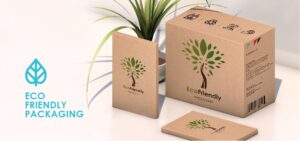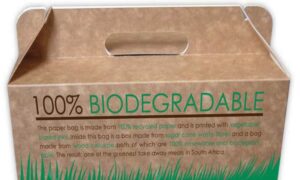
In recent years, sustainable packaging has emerged as a crucial factor in reshaping the food and drink industry. As environmental concerns continue to gain traction among consumers and businesses alike, the shift towards eco-friendly packaging solutions has become imperative. This article explores the transformative impact of sustainable packaging on the food and drink sector, highlighting its benefits, challenges, and future prospects.
The Rise of Sustainable Packaging
Sustainable packaging refers to the use of materials and processes that minimize environmental impact, reduce waste, and promote recycling and reuse. This approach is driven by the growing awareness of plastic pollution, climate change, and resource depletion. The food and drink industry, which is a significant contributor to packaging waste, is at the forefront of this movement.
Key Drivers of Change
- Consumer Demand: Modern consumers are increasingly conscious of their environmental footprint. Studies show that a significant number of shoppers prefer products with sustainable packaging. Brands that adopt eco-friendly packaging solutions can differentiate themselves in a competitive market and build stronger customer loyalty.
- Regulatory Pressure: Governments worldwide are implementing stricter regulations to curb plastic waste and promote sustainability. For instance, the European Union’s Single-Use Plastics Directive aims to reduce plastic waste by banning certain single-use plastic items and encouraging alternative solutions.
- Corporate Responsibility: Many companies are setting ambitious sustainability goals to enhance their environmental stewardship. Major brands in the food and drink industry are investing in sustainable packaging to meet their corporate social responsibility objectives and align with global sustainability trends.
Benefits of Sustainable Packaging
Sustainable packaging offers several advantages, both for businesses and the environment:
- Environmental Impact Reduction: By using materials that are recyclable, compostable, or biodegradable, companies can significantly reduce their environmental footprint. For example, plant-based materials like cornstarch and sugarcane offer alternatives to traditional plastics and decompose more easily.
- Waste Management: Sustainable packaging helps address the growing problem of packaging waste. Products designed for recyclability or compostability can reduce the amount of waste sent to landfills and improve overall waste management systems.
- Energy Efficiency: Many sustainable packaging solutions require less energy to produce compared to conventional packaging materials. For instance, lightweight materials can reduce transportation costs and lower greenhouse gas emissions associated with shipping.
- Brand Value: Embracing sustainable packaging can enhance a brand’s reputation and appeal to environmentally conscious consumers. It demonstrates a commitment to sustainability and can lead to increased market share and customer loyalty.
Challenges in Adopting Sustainable Packaging
Despite its benefits, transitioning to sustainable packaging poses several challenges:
- Cost: Sustainable packaging materials often come with higher production costs compared to traditional options. While prices are gradually decreasing as technology advances, the initial investment can be a barrier for some companies.
- Material Limitations: Not all sustainable materials are suitable for all types of food and drink products. Ensuring that these materials provide adequate protection, shelf life, and safety can be challenging.
- Consumer Education: Educating consumers about the benefits and proper disposal of sustainable packaging is crucial. Misunderstandings about recyclability and compostability can lead to contamination and inefficiencies in waste management.
- Supply Chain Integration: Integrating sustainable packaging into existing supply chains requires coordination with suppliers and logistics partners. Ensuring that all aspects of the supply chain support sustainability goals can be complex.
Innovations in Sustainable Packaging

The food and drink industry is witnessing several innovative approaches to sustainable packaging:
- Biodegradable Materials: Advances in biodegradable materials, such as plant-based plastics and edible packaging, are providing new solutions for reducing waste. These materials break down naturally, minimizing their impact on the environment.
- Reusable Packaging: Reusable packaging systems, such as refillable containers and returnable bottles, are gaining popularity. These systems reduce the need for single-use packaging and encourage a circular economy.
- Smart Packaging: Smart packaging technologies, such as QR codes and sensors, are enhancing the functionality of sustainable packaging. These technologies can provide information on recycling and disposal, improving consumer engagement and waste management.
- Minimalist Design: Minimalist packaging designs that use fewer materials and eliminate unnecessary components are becoming more common. These designs reduce overall packaging waste and lower production costs.
The Future of Sustainable Packaging
As the demand for sustainable packaging continues to grow, the food and drink industry is likely to see further advancements and shifts in packaging practices. Key trends to watch include:
- Increased Adoption: More companies will adopt sustainable packaging solutions as technology improves and costs decrease. Collaboration between businesses, governments, and consumers will drive widespread adoption.
- Regulatory Developments: Governments will introduce new regulations and incentives to promote sustainable packaging. Companies will need to stay informed and adapt to changing policies.
- Consumer Preferences: As consumers become more environmentally conscious, their preferences will drive the market towards innovative and sustainable packaging solutions. Brands that align with these preferences will have a competitive advantage.
- Technological Advances: Continued research and development in sustainable materials and packaging technologies will lead to more effective and affordable solutions. Innovations in areas such as nanotechnology and biotechnology will shape the future of packaging.
Conclusion
Sustainable packaging is reshaping the food and drink industry by addressing environmental challenges, meeting consumer expectations, and driving innovation. While there are obstacles to overcome, the benefits of sustainable packaging are clear, offering a path towards a more sustainable and responsible future. As the industry continues to evolve, companies that embrace sustainable practices will not only contribute to environmental protection but also gain a competitive edge in a rapidly changing market.



